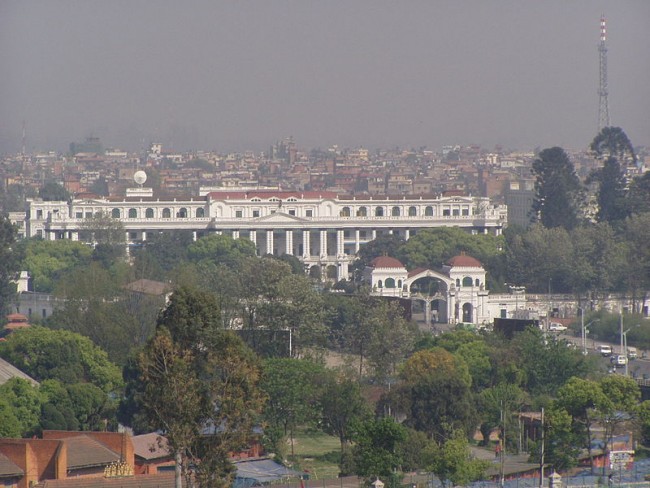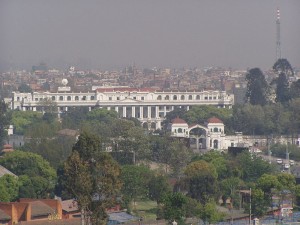
Nepal is currently at a critical crossroad with the establishment of the Truth and Reconciliation Commission (TRC) and the government’s step to finally comprehend the need for reconciliation amongst the conflict-affected civilians. Eight years after the internal conflict, several issues still being raised by the civil society, women’s rights groups, and international donors continue to be ignored by consecutive governments, including the current Nepalese government. The government still seems adamantly set on perceiving the issues as off-limits, despite international pressure from the OCHR special rapporteur and domestic organisations raising concerns about the government’s current TRC proposal and how it will not address the grievances and provide closure for many female victims who were directly or indirectly affected by the 1996-2006 Nepalese armed conflict.
Some of the most ignored victims of any conflict around the world are women, especially those who have been raped, tortured, or made widows by the conflict. Women experience unspeakable atrocities during conflicts and many of them carry these burdens, ordeals, and the weight of these horrors to their graves. Several of these women have also had to witness the murder of their husbands while being raped in the process.
The tears of our women
Lily Thapa, the founder of Women for Human Rights (WHR), who recently attended the Global Summit to End Sexual Violence in Conflict in London ExCel, is herself a victim of conflict. At just 29, her husband, a medical doctor working for the United Nations (UN) was killed in the 1991 Gulf War. Thapa explained, “Women are expected to be in mourning for a year during which they cannot see their family”. In remote parts of Nepal “it’s not uncommon for them to be forced to shave their heads and live away from the villages”. In Nepal, widows are often shunned because they are believed to bring bad luck. Custom dictates that widows cannot wear colourful clothing, eat meat, or attend weddings.
According to figures released by Nepal’s 2010 census, 51.5 per cent of the Nepali population are women, and of the total female married population above 10 years-old, illiterate widows constitute 80 per cent and 67 per cent are between the ages of 20 and 35 with 3 to 4 children on average. Over 75 per cent of single women get married between the ages of 10 and 19 years old. For many of the women who have lost loved ones during the decade-long violence in Nepal, it is important that the TRC addresses many of the issues faced by these women in order for many of them to receive some form of closure.
The slow walk to justice
On 14 March 2013, President Ram Baran Yadav endorsed the new Ordinance on Enforced Disappearances and Truth and Reconciliation Commission, which was established without any consultation with the victims of the conflict or human rights institutions. The Commission is tasked with investigating the killing of several thousands of people during the 1996-2006 conflict in Nepal. Among other violations, the conflict also resulted in 1,300 persons who are still missing.
The announcement came into force immediately but was challenged by two petitions put before the Supreme Court. These petitions argued that the announcement was unconstitutional and did not conform to Nepal’s signed and ratified international commitments. In January 2014, the Supreme Court issued its judgment, concluding that the announcement by the government was unconstitutional, and required an amendment from the government in compliance with international standards.
For some reason, the Nepalese government had a bad case of amnesia and had forgotten its duties stipulated in the international humanitarian law and human rights-related treaties. It is in the interest of the Nepalese government to maintain the rule of law, which is a requirement for a democratic society. Seeing that the proposed TRC allows the Commission to recommend amnesty for all of the crimes under the jurisdiction of the Commission except rape, there is a potential for amnesties to be granted to many perpetrators in the conflict. As the UN Human Rights Committee has recognised, “the problem of amnesties for these violations should be a matter of sustained concern for the Committee”, adding that this may play “a contributing part in the recurrence of violence”
According to the Office of the United Nations High Commissioner for Human Rights (OHCHR), “reconciliation at the societal level is more than just one-to-one encounters, but requires the establishment of institutions that are trustworthy and genuinely embody the idea that victims as well as all others are rights holders”. However, it appears that the Nepalese government has misunderstood what a TRC is designed to do, particularly because no TRC should be seen separate from its initiatives that promote justice, truth, reparations, and guarantees of non-recurrence. Unfortunately, the Nepalese TRC looks set not to address many of these issues that continue to affect the women of Nepalese society. This is troubling considering that many of these women could support and contribute to ushering Nepalese society in a positive direction if these grievances and unanswered questions were to be answered through the TRC process. It is the duty of the state to investigate and prosecute those involved in crimes that are recognised as crimes under international law and seen as gross human rights violations. These include breaches of the Geneva Convention, crimes against humanity, torture, rape, and other forms of sexual violence, enforced disappearance, and extrajudicial executions.
In April 2014, the United Nations High Commissioner for Human Rights Navi Pillay stated “While I welcome steps taken by the Government of Nepal to take the Transitional Justice process forward, I am extremely concerned by its new attempt to introduce amnesties for serious human rights violations. Such amnesties not only violate core principles under international law but would also weaken the foundation for a genuine and lasting peace in Nepal.”
Any TRC can be a crucial mechanism for reconciliation within a country or society. If it is steered in the right direction it can also be used to address many of the grievances that women have suffered and provide a process that allows the affected Nepalese victims to move forward once and for all. The announcement that two Nepalese women from the field of law would be sitting on the TRC can be seen as a glimmer of hope for many of the female victims. This move might help probe the severe human rights violations and crimes against humanity perpetrated during conflict.
Short, sweet and to the point
The government, it seems, has also implemented many of these policies in an ad-hoc manner with no clear vision or deliverable outcomes that would deal with the different issues facing women. There needs to be a clearer definition from the government between those who are conflict victims and those who are individually affected (e.g. tortured) victims. This unaddressed element in the government’s policy leaves many of the women feeling like their voices will not be heard, which slows the process of peace in Nepal. For example, victims of torture will not be counted as conflict victims according to the government’s policy and the TRC mandate. This leaves an enormous gap into which thousands of women and other members of society who have been tortured during the conflict will fall. Moreover, the lack of support and after care services could later lead to violence by these marginalised groups.
For Lily Thapa, the TRC bill is an opportunity to shield the majority of political leaders and their associates who played a part in the violence and violations during the conflict. Thapa adds, “There are too many politically appointed people running commissions in Nepal with their ‘own interest and goals.’” The TRC mandate should be clearly set under international law, which means that it must be set in accordance with international criteria and not by the Nepalese government’s own delusional, ideological, and self-serving desires. Bhagiram Chaudhary, founding chairperson of the Conflict Victims Society and a member of the National Victim’s Alliance, said that unless the women are ensured security, they would not publicly come out to launch a campaign that prioritizes these cases in the TRC. He further adds that many women and girls have become silent due to the social stigmas and insecurity associated with being a victim of sexual violence and rape.
The Commission seems to currently suffer from a lack of independence in terms of its composition, addressing this issue is crucial for the effective functioning of a TRC. It is Nepal’s longstanding experience that commissioners are nominated through political parties. As it now stands, there are no measures specified in the mandate that guard against this and no guarantees for the impartiality and independence of the Commission.
Waiting for the drama to unfold
The TRC should have wider powers and a broader range of considerations. In addition, it should have a mandate to look into the historical and political context of the conflict, including the timing of events and the patterns of violations, and the root causes of these violations. International human rights experts continue to voice deep concerns that the recently adopted truth-seeking law leaves mass violations unaddressed and that “amnesties for these atrocities would convey to Nepalese society that some people are above the law.” The TRC process should enable the country to come to terms with its past instead of further entrenching the behaviour of perpetrators. Reconciliation is not simply a one-to-one encounter, but is about instituting responsible establishments that genuinely embody the idea that victims, and indeed all individuals, are rights-holders.
As many civil society, international donors, and the UN’s OHCHR have stated, several parts of the bill need serious reconsideration, especially the following: (1) the Commissions’ directive to conduct mediation to reconcile victims and perpetrators even in cases of serious human rights violations (section 22); (2) the ban of any legal action in mediated cases (section 25 (2)(a)); (3) the TRC’s mandate to mention and endorse amnesties for those involved in crimes under international law and gross human rights violations (section 26); and (4) the non-recognition of victims’ rights to compensation (section 2 (e) and 23). The ball is in the government and the three major political parties’ court and they will choose where to throw the ball next. It is also the responsibility of all actors to take an impartial and balanced position rather than contribute to upcoming confusion.
Considering the recent findings of academics such as Dr. Ismene Gizelis from the University of Essex, whose research supports the claim that women can make significant contributions to a country’s post-conflict reconstruction condition, it is a shame that the Nepalese government has not done more to address many of the issues that women’s groups have expressed concern over. If Nepal is to ever move forward and fully heal, it will need the help, assistance, and support of women to carry the country through this process. In many ways it is counterproductive for the government not to address many of the grievances that women have aired. Most female victims, especially the victims of sexual violence and rape, are unwilling to come out, despite their desire to bring perpetrators under legal process. Women are fearful that after their cases become public, they may be rejected by their families and by society. In this way, a TRC process that does not promote an opportunity for women to receive answers will only result in a TRC exercise with no real understanding of the events that took place and will ultimately be a waste of society’s resources and money.
Source: JTW
*Andrew E. Tchie is a PhD student in Government at the University of Essex





